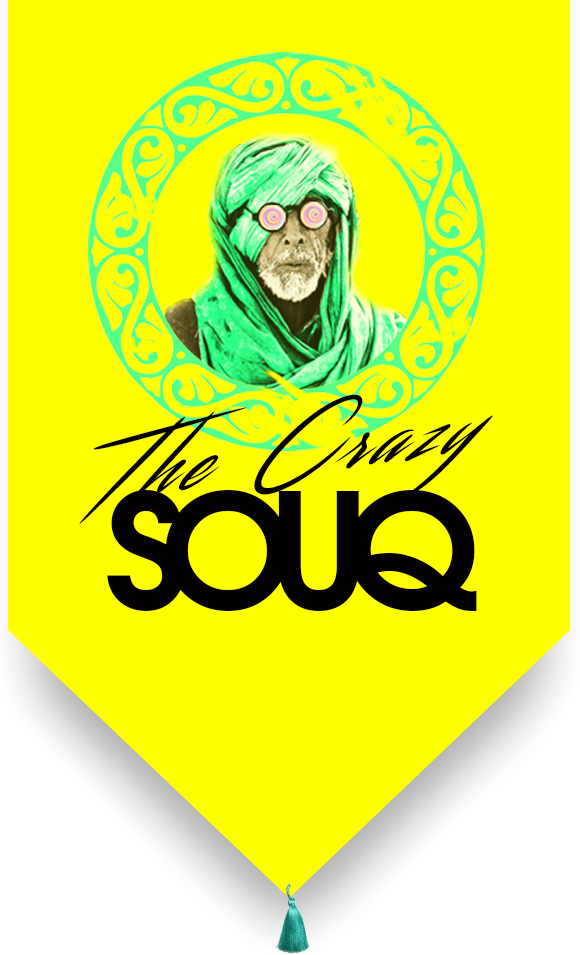Whether you were all over Madonna’s Amazigh get up like sugar on masfouf (or seffa) or not, one thing is for certain: you’ve seen those Instagram photos.
Yes, those.
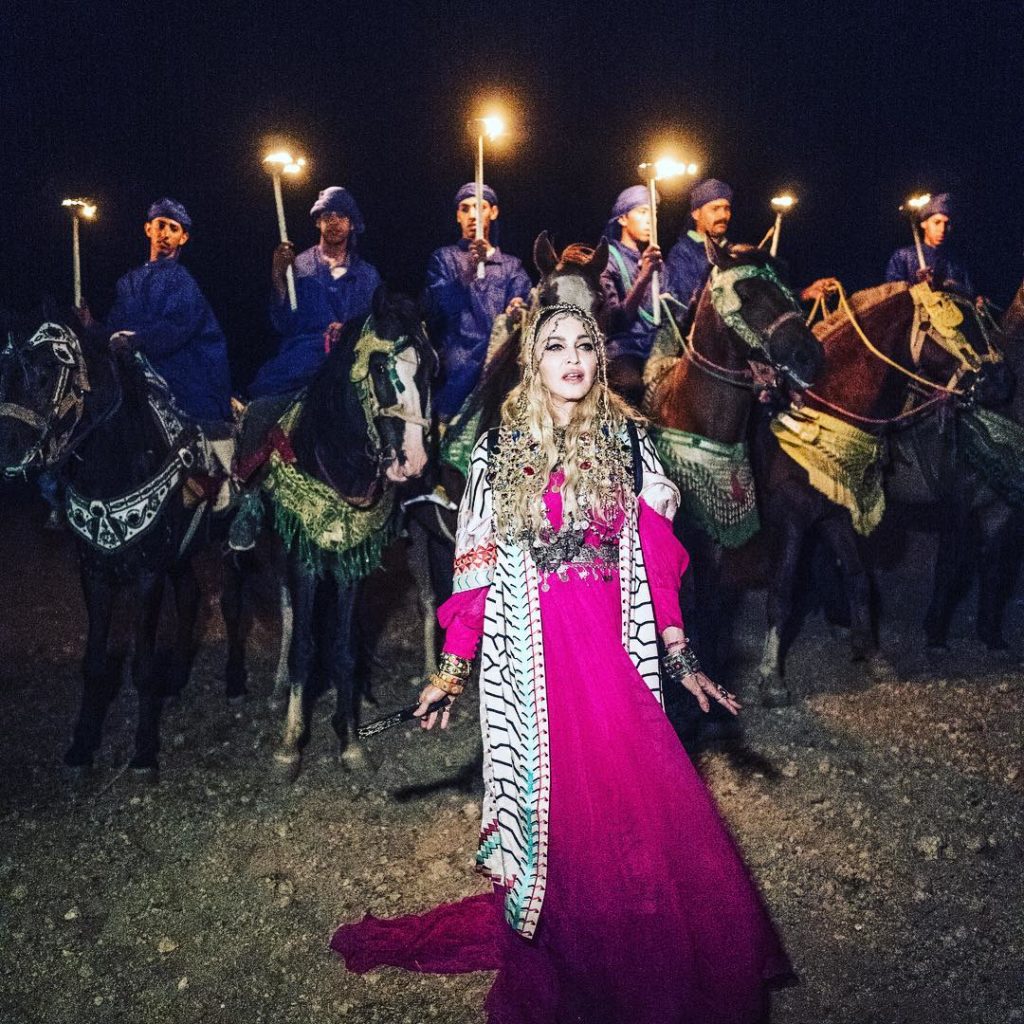
Notably, not much explanation was provided upon the reveal of each Amazigh accessory and attire, as Madonna slowly released photo after photo from her Moroccan birthday getaway. Instead, her feed resembled a rich alcove of patterns, shimmer and sand. Of course, these images were then met with a tonne of comments. Some confessing their love (I believe it’s called fangirling), some utterly confused and then there was the North Africans.
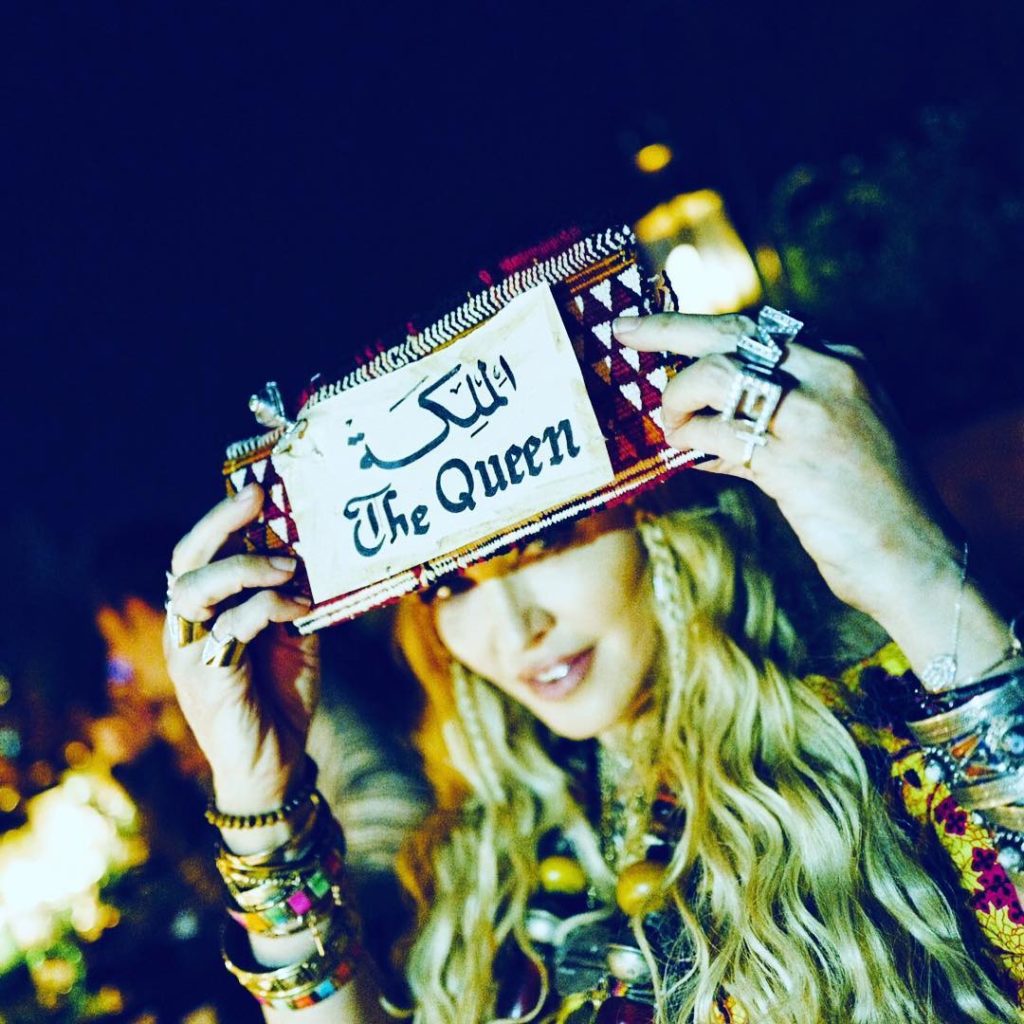
It’s very rare where North Africa is shown in the mainstream light without some kind of exoticism attached. In the Anglo speaking world, the region of North Africa does not hold strong enough historical accolade (as for example, with French speakers for historical purposes) that people know about it in their day to day lives. So, for the Anglo-majority fan base of Madonna, they were coming across something fairly new and was beyond the red doors and tiled walls of Morocco they were used to seeing. But let it be known that social media has opened the doors (and mouths) of many a speaker, fan and hater on the internet in every language. And if you think ‘posted one minute ago’ is as simple as that, you are wrong my friend.
Posted one minute ago is the virtual version of your aunty who loves to t9ar3aj and tberguig (gossip) from the sta7 (open rooftop) as people walk by. Little do they know they are being checked from head to toe and her ears are switched on to every word, tut and sigh that person has made. Instagram is the new 3amri l9ra3 (filling up the bottles – filling the bottles with gossip).
So when Madonna posted her image wearing a fez hat with Amazigh jewellery, you knew the North African t9ar3ij & tberguig police were there to investigate.
As previously mentioned, no explanation was given of her clothing: instead she talked about wearing a ‘C A K E on my head!’ and this began the countdown to her birthday. And many people getting triggered.
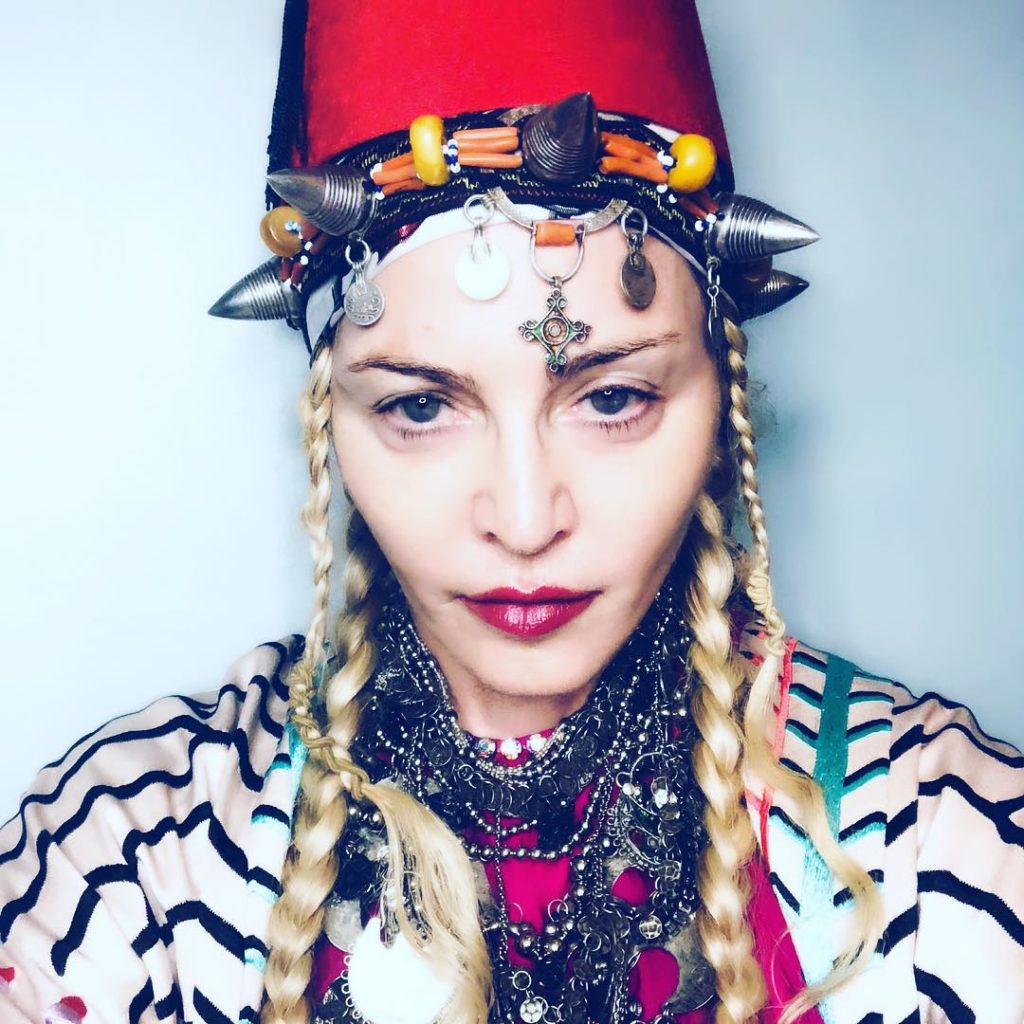
@madonna wearing a FEZ and some berber accessories.
She then walked us through the Medina (with many commenters confused as to how she’d made it from Morocco to Saudi Arabia so quickly…) as the call to prayer was heard in the background. Once again, no real explanation but definitely another trigger.
Then she did it. She did the thing with the jewellery on the head and the necklaces draped around her neck. And then the self-proclamation came. BerberQueen (fire emoji, Moroccan flag, love heart emoji).
And the comments went W I L D. For better or worse, I honestly think some were too naïve to even ask what she was doing or wearing and simply congratulated her on her birthday. Many Moroccan commentators also celebrated her and welcomed her to Marakkech. And then the rest of North Africa arrived.
For many North Africans, identifying as part of the Imazighen (pl) was almost impossible and was often erased. So there has always been a strong hold on the preservation of the various cultures of these people who span through Mauritania, Morocco, Algeria, Tunisia, Libya, parts of Egypt, Mali and Niger… Each tribe has distinct features in their dress, manners and even genetics. However, they have all had a similar struggle of acceptance and visibility in modern day. One interesting commenter posted asking Madonna to please refrain from using the term ‘Berber’ as it is offensive.
The term ‘Berber’ actually comes from the Greek word ‘barbaria’, meaning barbarians.
The hit back from many North Africans spanned from constructive criticism, history lessons and some good ol’ fashion arguing. It’s often fine to take on aspects of another culture. The problem arises when somebody takes something from another less dominant culture in a way that members of that culture find undesirable and offensive. But can it really be said that everyone from Morocco and North Africa was offended? The point is that the more marginalised group doesn’t get a say, while their heritage is deployed by someone in a position of greater privilege, and this time it was for fun AND fashion. After all, she celebrated in Morocco, her photographer was Moroccan (Hassan Hajjaj) and she wore the attire in its native country.
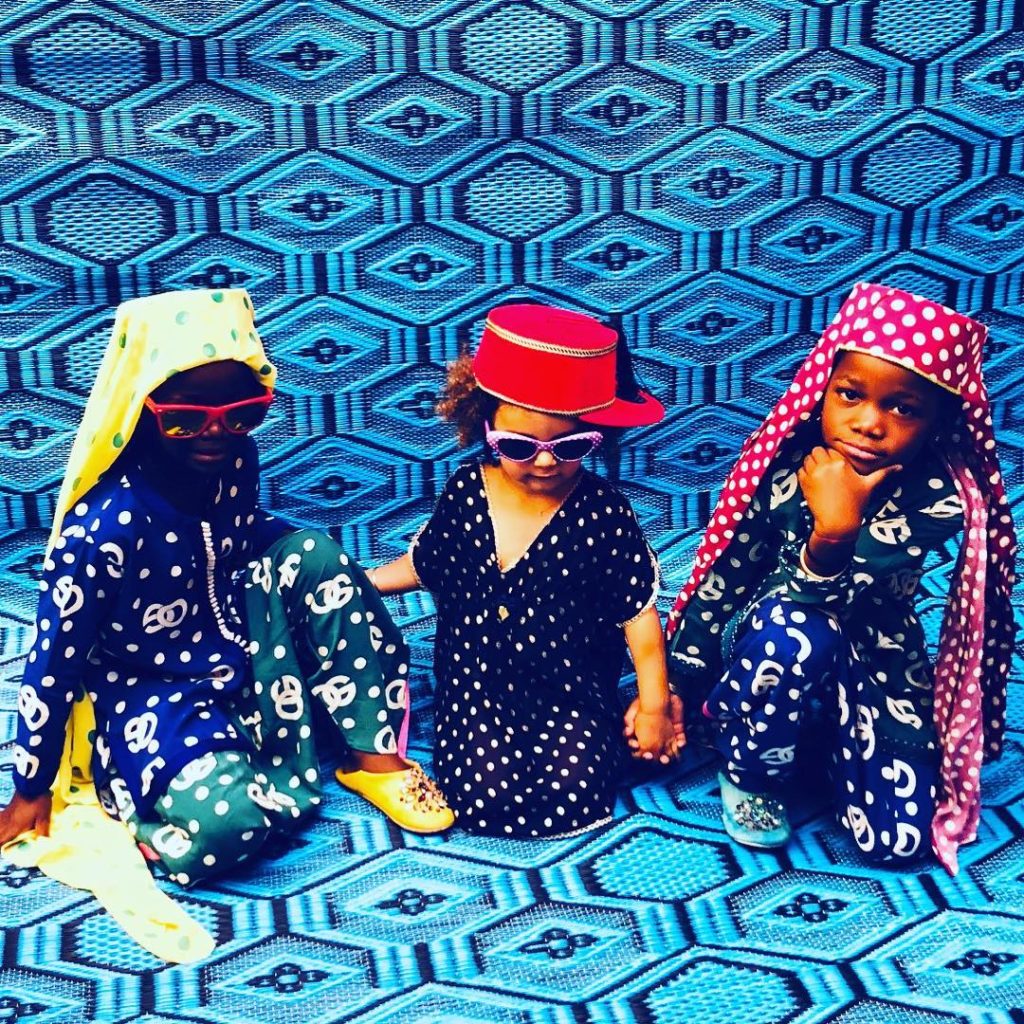
photo shooting by Hassan HAJJAJ, Marrakech.
But whether you see it as honour or insult, one thing is for certain: everyone is talking and it’s giving North Africans in and out of North Africa a reason to come together and talk (or shout).
Madonna: cultural appropration or appreciation, guilty or not guilty? let us know and give us your opinion!
Que les photos de Madonna vous évoquent la douceur d’un thé à la menthe en bord de mer ou non, une chose est certaine : vous les avez vues !
Oui, vous savez de quoi je parle!

Comme sorties de nulle part, les photos de son escapade marocaine pour son anniversaire n’ont pas été livrées avec le mode d’emploi. Son feed Instagram s’est transformé en une mosaïque de couleurs, de motifs et de poudre de perlimpinpin.
Evidemment ses photos ont été accueillies par un tsunami de commentaires. Il y a les groupies qui lui crient leur amour, il y a ses fans un peu confus et il y a les maghrébins.

Le Maghreb n’est que très peu mis en avant sur les réseaux sociaux. Le monde anglo-saxon n’a pas eu dans l’histoire de grandes relations avec l’Afrique du Nord (contrairement à la France par exemple) c’est pourquoi elle n’y est pas réputée. C’était un plongeon dans un univers nouveau pour la grande partie des fans de Madonna ! Très loin du zelij (mosaïques) et des portes rouges qui représentent dans leur tête le Maroc.
Comme une bonne cuillère du couscous familial du vendredi, les réseaux sociaux ont le don d’ouvrir les bouches d’un grand nombre de gens, fans ou haters (haineux) aux quatre coins du monde.
Vous qui pensez que le simple “posté il y a une minute” est anodin, vous êtes à côté de la plaque.
“Posté il y a une minute” c’est la version virtuelle de khalti (tata) qui t9ar3ej (raconte des potins) du haut de son sta7 (terrasse sur le toit) sur tous les malheureux qu’elle capte du haut de sa tour de contrôle. Ils ne doutent pas une seconde qu’il sont scannés de la tête aux pieds plus encore qu’à la sécurité de l’aéroport. Instagram c’est la nouvelle façon de 3amr l9ra3 (remplir les bouteilles, sous entendu de potins).
Vous imaginez bien que lorsque Madonna a commencé à publier ses photos portant un Fez avec des bijoux amazigh, la police du t9ar3ij maghrébine était là pour mener l’enquête. Comme dit plus haut, elle a livré ses photos sans mode d’emploi, aucune explication donnée à ses abonnés sur sa tenue, elle a préféré dire qu’elle portrait un “G A T E A U” sur la tête. Le compte a rebours pour son anniversaire était déclenché entraînant une déferlante de commentaires.

@madonna qui porte un FEZ et des accessoire berberes.
Et puis, elle a osé. Après s’être enguirlandée de bijoux de tête, drapée de colliers autour du cou, elle l’a fait. Elle s’est auto proclamée “REINE BERBERE”.
Ont alors suivi les commentaires par miliers, c’était comme un lâcher de taureaux dans les rues de Pampelune.
Beaucoup lui ont simplement (et je pense naïvement) souhaité un joyeux anniversaire, de nombreux marocains lui ont chaleureusement souhaité la bienvenue dans leur pays. Le reste du Maghreb a ensuite parlé.
Pour beaucoup de nords-africains, qu’ils soient de la Mauritanie, du Maroc, de l’Algérie, de la Tunisie, du Sahara Occidental, de la Lybie, de l’Egypte, du Mali ou du Niger il a souvent été difficile de faire reconnaître leur identité amazigh, c’est pourquoi ils y sont très attachés. Chacune de leur tribu a des caractéristiques qui lui sont propres, des vêtements à la nourriture jusqu’à leur génétique, pourtant elles mènent une lutte similaire pour la reconnaissance de leur individualité.
Un commentaire pertinent a retenu mon attention, demandant à Madonna de s’abstenir d’utiliser le mot “berbère”, venant du grec “barbaria” qui fait évidemment référence aux barbares. Beaucoup de nords-africains ont commenté dans ce sens, apportant des notions d’histoire et de culture aux photos de Madonna sans de légende.
Accepter une autre culture et la partager est une très bonne chose. Le problème se pose devant l’appropriation culturelle, la présentant comme une culture inférieure, offensant ses membres. Je sais, vous me direz : peut-on affirmer que tous les nords africains et en particuliers les marocains aient été offensés ? Le fait est que les principaux concernés, i-e ces peuples dont l’héritage culturel est mis en vitrine par une personne qui, de part ses privilèges, l’exhibe pour son plaisir ET pour la mode.
Après tout, elle a fêté son anniversaire au Maroc et a décidé de faire un shooting avec des tenues du Maroc par un photographe marocain (Hassan Hajjaj).

photo shooting by Hassan HAJJAJ, Marrakech.
Que vous le preniez pour un honneur ou une insulte, une chose est sûre, tout le monde en parle et les nords-africains d’ici et d’ailleurs ont enfin une chance de s’exprimer sur le sujet.
